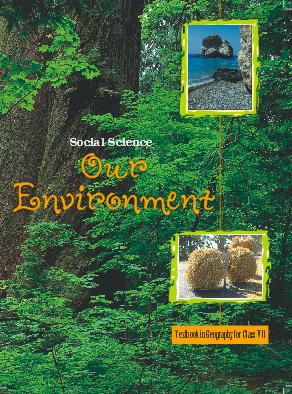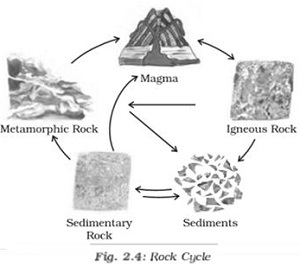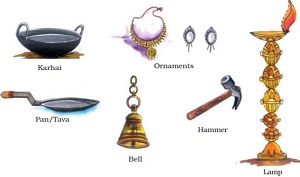NCERT Solutions for Class 7 Social Science Inside our earth are available in PDF format for free download. These ncert book chapter wise questions and answers are very helpful for CBSE exam. CBSE recommends NCERT books and most of the questions in CBSE exam are asked from NCERT text books. Class 7 Social Science chapter wise NCERT solution for Social Science part 1 part 2 and Part 3 for all the chapters can be downloaded from our website and myCBSEguide mobile app for free.
NCERT solutions for Geography Inside our earth Download as PDF

NCERT Class 7 Social Science Chapter Wise Solutions
Geography
- Environment
- Inside our earth
- Our Changing Earth
- Air
- Water
- Natural Vegetation and Wild Life
- Human environment-settlement transport and communication
- Human-environment interactions the tropical and the subtropical region
- Life in the temperate grasslands
- Life in the deserts
History
- Racing changes through a thousand years
- New kings and kingdoms
- The Delhi Sultans
- The Mughal Empire
- Rules and buildings
- Towns, traders and craftspersons
- Tribes, nomads and settled communities
- Devotional paths to the divine
- The making of regional cultures
- Eighteenth-century political formations
Political Science
- Equality in Indian democracy
- Role of the government in health
- How the state government works
- Growing up as boys and girls
- Women change the world
- Media and advertising
- Understanding advertising
- Markets
- A shirt in the market
NCERT Solutions for Class 7 Social Science Inside our earth
Q1. Answer the following questions:
- What are the three layers of the earth?
- What is a rock?
- Name three types of rocks.
- How are extrusive and intrusive rocks formed?
- What do you mean by a rock cycle?
- What are the uses of rocks?
- What are metamorphic rocks?
Answers:
- The Earth is made up of several concentric layers with one inside another just like the onion. The three layers of the earth are the crust, the mantle, and the core. The uppermost layer or crust is the thinnest of all layers. It is 35 km on the continental masses and only 5 km on the ocean floors. Just beneath the crust is the mantle which extends up to a depth of 2900 km. The innermost layer is the core with a radius of about 3500 km. It is made up of nickel and iron and is therefore called a knife. The central core has very high temperature and pressure. The crust forms only 0.5 percent of the volume of the earth, 16 percent consists of the mantle and 83 percent makes the core.
- Rock or stone is a natural substance, a solid aggregate of one or more minerals or mineraloids. For example, granite, a common rock, is a combination of the minerals quartz, feldspar and biotite. The Earth’s outer solid layer, the lithosphere, is made of rock.
- Igneous, sedimentary and metamorphic rocks are the three types of rocks.
- Both extrusive and intrusive rocks are examples of igneous rocks. Igneous rocks are also known as primary rocks. Extrusive rocks are formed when the molten magma present inside the earth’s interior comes out onto the earth’s surface, cools down rapidly and becomes solid on the earth’s crust. These rocks have a very fine-grained structure. For example, basalt. Deccan plateau is made of basalt rocks. When molten magma cools down and solidifies deep within the earth’s crust, intrusive rocks are formed. Since they cool down slowly, they form large grains. Granite is an example of such a rock. Grinding stones used to prepare paste/powder of spices and grains are made of granite. Nowadays, granite is also used for flooring.
- The transformation of one type of rock into another, under certain conditions and in a cyclic manner is referred to as the rock cycle. For example, igneous rocks, formed as a result of the solidification of molten magma, may break down into smaller particles, which may then be transported and deposited to form sedimentary rocks. Sedimentary and igneous rocks transform into metamorphic rocks when subjected to heat and pressure. These metamorphic rocks may themselves get broken down to form sedimentary rocks, or they may melt under great heat and pressure to form molten magma, which would then once again solidify to form igneous rocks.
- Some of the uses of rocks are as follows:
- For building roads, houses, and other buildings
- The mineral gold is used for making jewellery
- For cutting and drilling purposes
- The fossil remains of plants and animals present in rocks help in scientific research.
- The different minerals that make up different rocks are used as fuels, medicines, fertilizers, and in various industries.
- Stones are used to playing many games.
- The word Metamorphic is derived from the Greek word Metamorphose which means the change of form. Metamorphic rocks are the rocks that get formed under great heat and pressure. They are formed when Igneous and sedimentary rocks are subjected to heat and pressure. For example, clay changes to slate and limestone into marble.
Q2. Tick the correct answer.
(i) The rock which is made up of molten magma is
(a) Igneous (b) Sedimentary (c) Metamorphic
Ans: (a) Igneous
(ii) The innermost layer of the earth is
(a) Crust (b) Core (c) Mantle
Ans: (b) Core
(iii) Gold, petroleum and coal are examples of
(a) Rocks (b) Minerals (c) Fossils
Ans: (b) Minerals
(iv) Rocks which contain fossils are
(a) Sedimentary rocks
(b) Metamorphic rocks
(c) Igneous rocks
Ans: (a) Sedimentary rocks
(v) The thinnest layer of the earth is
(a) Crust (b) Mantle (c) Core
Ans: (a) Crust
Q3. Match the following.
Ans.
| (i) Core | (e) Innermost layer |
| (ii) Minerals | (d) Has definite chemical composition |
| (iii) Rocks | (b) Used for roads and buildings |
| (iv) Clay | (a) Changes into slate |
| (v) Sial | (c) Made of silicon and alumina |
Q4. Give reasons.
(i) We cannot go to the centre of the earth.
Ans: The centre of the earth lying about 6000 km from the ocean floor is characterised by extremely high temperature and pressure. There is only molten magma at the earth’s centre. Oxygen is absent. Such conditions do not permit the survival of any living organism. Thus, we cannot go to the centre of the earth.
(ii) Sedimentary rocks are formed from sediments.
Ans:When big rocks break down into small fragments (or sediments), the fragments are transported and deposited by water and wind. The loose sediments compress and harden over the years to form layers of rocks. These rocks are known as sedimentary rocks. For example, sandstone is made from grains of sand. These rocks may also contain fossils of plants, animals and other microorganisms that once lived on them.
(iii) Limestone is changed into marble.
Ans: Limestone is an example of sedimentary rock. When subjected to extreme heat and pressure, it gets converted into marble, a metamorphic rock. This is a continuous process given more temperatures and pressure the rock may melt completely and would eventually turn into and igneous rock that will get eroded and become limestone again.
Q5. For fun.
(i) What are the minerals most commonly used in the following objects?
(ii) Identify some more objects made up of different minerals.
Ans. (i)
| Object | Minerals most commonly used in them |
| Karhai | Iron, copper, stainless steel,teflon |
| Ornaments | Gold, silver, platinum |
| Lamp | Brass, silver, gold, copper |
| Hammer | Iron, steel, lead, brass |
| Bell | Brass, silver, gold |
| Pan/tava | Iron, steel, aluminium,teflon |
(ii) Pencil lead is made of graphite. Telephones have copper wiring. Carpets in our homes contain sulphur and chromite. Clocks are made of Quartz and Pentlandite. Toothpaste is made white with titanium oxide which comes from minerals called rutile, ilmenite, and anatase.
NCERT solutions for Class 7 Social Science
NCERT Solutions Class 7 Social Science PDF (Download) Free from myCBSEguide app and myCBSEguide website. Ncert solution class 7 Social Science includes textbook solutions from part 1 and part 2 and part 3 NCERT Solutions for CBSE Class 7 Social Science have total 30 chapters. 7 Social Science NCERT Solutions in PDF for free Download on our website. Ncert Social Science class 7 solutions PDF and Social Science ncert class 7 PDF solutions with latest modifications and as per the latest CBSE syllabus are only available in myCBSEguide.
CBSE app for Class 7
To download NCERT Solutions for class 7 Social Science, Computer Science, Hindi ,English, Maths Science do check myCBSEguide app or website. myCBSEguide provides sample papers with solution, test papers for chapter-wise practice, NCERT solutions, NCERT Exemplar solutions, quick revision notes for ready reference, CBSE guess papers and CBSE important question papers. Sample Paper all are made available through the best app for CBSE students and myCBSEguide website.

Test Generator
Create question paper PDF and online tests with your own name & logo in minutes.
Create Now
Learn8 App
Practice unlimited questions for Entrance tests & government job exams at ₹99 only
Install Now
